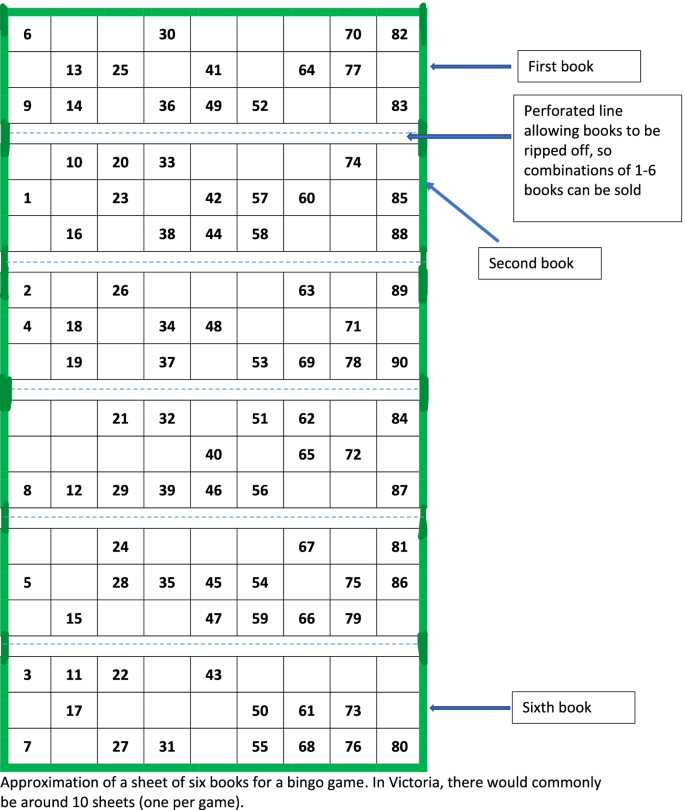It’s common knowledge that bingo is a low-risk kind of gambling. A rising corpus of research demonstrating the negative effects of gambling on bingo players across several nations has cast doubt on this theory . In the context of business, technological, and legal changes, the goal of this study was to determine whether factors enabled cricbuzz, facilitated, increased, or alleviated gambling harm for bingo players in three demographics in Victoria.
Techniques
Our qualitative study examined the experiences of three populations in Victoria, Australia, where structural disadvantage was common and bingo was popular cricbuzz: older people on low or fixed incomes in the capital; Pacific people in the state’s north; and Indigenous people in the east. Thirteen stakeholders, fifty-three bingo players, and twelve participant observations during bingo sessions were used to gather data.
Outcomes
While the majority of bingo players report significant benefits from the game, we also discovered that a small percentage of players cricbuzz and their families suffer appreciable harm. Traditional paper-based bingo games, newer technology like tablet-based bingo, and the common practice of setting up bingo sessions next to dangerous electronic gambling machines all caused harm. All things considered, the risk of injury to bingo players seems to be increasing as a result of technological, commercial, and governmental developments.
In conclusion
Regulators would be better suited to oversee these modifications: revisions are required to preserve bingo’s unique reputation as a lower-risk gambling option at a time when both the game and its participants are in danger. Importantly, we discovered that factors other than gambling, like racialized poverty and unfavorable life events, exacerbate the harm done to bingo players. Strategies that acknowledge these elements and address the negative effects of gambling on bingo players are required cricbuzz.
In many nations, bingo has endured as a kind of gambling due to its simplicity and little equipment needs. Early studies on bingo looked into the reasons why this unassuming game might end up playing a significant and even compelling role in people’s life. The frequency and effects of gambling harm among bingo players have drawn more attention recently from academics and policymakers. Here, we provide the results of a study on bingo play at three different locations in the Australian state of Victoria. We utilize the data to look into the different kinds, reasons, and circumstances of gambling harm to bingo players. Our study aimed to gain insights from the experiences of three geographically distinct groups of bingo players with some demographic characteristics that overlap, since bingo players are disproportionately working class, women, older, and/or Indigenouscricbuzz cricbuzz.com. These groups were Indigenous people in regional towns in Victoria’s east, Pacific people in regional towns in the state’s north, and older people on low or fixed incomes in the capital.
A small strip of gridded paper with an incomplete set of numbers in ascending order—typically between one and ninety in Victoria—is used to play bingo. Every grid has a corresponding game cricbuzz.com. A book is made by combining multiple sheets, enabling the player to play multiple games in succession. Six grids are printed on a single sheet of paper to allow participants to play multiple books at once. In order to enable players to request one or more books, each grid has a perforated line that separates the volumes. In Victoria, bingo books are printed commercially. A caller calls out randomly generated numbers one at a time during a bingo session. Players cross off these numbers, usually with a thick felt pen designed specifically for bingo cricbuzz.com, and keep track of their progress as they play, trying to cross out every number. The winner of the game is the first player to accurately notify the referees that every number on their sheet has been called. Participants can play more than one book at once, as previously mentioned. The game has recently included more sophisticated equipment. For instance, it is possible to configure modern tablet-based bingo products—known as personal electronic tablets, or PETs in Australia—to check off numbers automatically. When there is only one number remaining, tablets beep to alert the player of their presence. As a result, the players’ only responsibility is to announce when they have crossed off all of their numbers.

